
On the night of November 10, 1904, Julius Weber presided over the family meal as he’d done countless time before. His nineteen year old son Adolph had been absent, but that was nothing out of the ordinary; for the past year or so, “Dolphy” as his parents called him, had taken his meals in his room. Adolph’s typically morose demeanor left his mother Mary Weber guiltily grateful that the young man hadn’t joined them.
Up until a few years before, Dolphy had been the family’s pride. His sister Bertha adored him. Dolphy took special care of Earl; who was what doctors of the day called an imbecile. Now, Dolphy was nothing but trouble to his family. He became morose, and dressed all in black. Rumors circulated of a shed in the back of the family’s homestead where he performed cruel experiments on small animals. He began raising fighting cocks, and if they lacked the martial spirit, he trample their heads with his boots, grinding their skull beneath his heel. The entire populace had talked for weeks on end when a desperado robbed the Placer County Bank in early 1904; Adolph didn’t care, and snapped at anyone who asked his opinion about it.
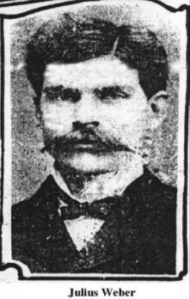
Dolphy disappeared for a few days at a time, his family circulated that he was visiting friends in Sacramento or San Francisco; and they weren’t technically lying, if one called the prostitutes which inhabited the low brothels in those towns “friends.” He’d been seen striking Earl, impatient at the amount of care the mentally deficient boy needed. The family doctor, Robert F. Rooney became firmly convinced that Dolphy was a hypochondriac; even worse, he diagnosed the teenager as a chronic masturbator. Dolphy approached Rooney to request a circumcision to cure the malady, his family had caught him one too many times. The doctor refused to perform such a procedure on a sixteen year old absent parental permission; Adolph reluctantly returned the next day with his father, who’d consented to the operation which was duly performed.
With the morose Dolphy upstairs, daughter Bertha, aged 17, and Earl, aged 12, completed the family circle at the dinner table that mid-November evening. Earl sat close by his mother’s side; his handicap meant that a member of the family needed to be in constant attendance.
Although he’d been in America for some thirty years, Julius’ German accent was still heavy, but the town of Auburn was a welcoming place, and besides, they’d expected the former owner of the town brewery to be a German; all good brewers were. The family’s meal that night was probably German too, washed down with good beer. At 6:30 in the evening, the heavy food settled in his stomach, Julius tucked a copy of The Placerville Mountain Democrat under his arm and closed the bathroom door behind him.
His son Dolphy burst in while Julius’ pants were still around his ankle. Adolph leveled a .32 caliber pistol at his father’s chest, and wordlessly pulled the trigger; the bullet entered his father’s heart killing him instantly.
Adolph strode into the living room, where his mother, Bertha and Earl were talking. One shot felled his sister, and his mother and Earl ran screaming to the entrance hall. Adolph’s first shot into his mother’s back, knocking her to the ground.

She rose, scrambling to reach the telephone. She managed to pick up the receiver before Adolph shot her in the head; bits of brain and bone covered the rotary dial. Adolph didn’t even waste a bullet on little Earl; he crushed the child’s skull underneath the butt of his gun.
Each of the bodies was dragged to the living room and Adolph set the house afire to cover the crime. He walked out the front door on his way to town as the fire smoldered behind him.
In his hurry to leave, Adolph hadn’t had time to examine his clothes, under the streetlights which illuminated Placerville’s miniscule business district, he noticed several bloodstains. Fortunately, the general store was still open. He ducked in and purchased a pair of pants that were a few sizes too small; when [the clerk] offered to sell him a pair more suited, Adolph angrily remarked that he was in a rush to get to a social engagement, and that he’d ruined his previous pair by running into a fire hydrant.

With his old pants rolled under his arm, Adolph was strolling down Main Street when the fire bells rang out. Along with most of Auburn’s population, Adolph ran to the Weber household; the fire was already fairly well underway. Several witnesses saw him break the window glass with his old pants, and throw them on the flames. Rescuers managed to carry little Earl’s body outside, wrapped in the curtains which had been [Wife’s] pride. Adolph’s blow with the gun hadn’t killed the boy, but he expired a few moments later on the front lawn. Other neighbors managed to drag the family piano, an elaborate model costing $9000, out on the front lawn; the rest of the house burned to the ground.
Initially it appeared that Adolph was to be pitied; his entire family had burned to death in a house fire, and the poor orphan was now all alone. Then the police discovered that the charred corpses had been shot. Mrs. Snowden, Adolph’s aunt, told a newspaper that Mary feared her son’s temper. Adolph was confined, then formally booked for first degree murder charges when the coroner’s jury heard the facts. The pants with which he’d broken the window were found to contain blood stains. Yet, Adolph still had his supporters; even after the police discovered the $20 gold pieces taken from the Placer County Bank robbery hidden under a pile of manure in the barn, female admirers still sent violets to the jail.
The trial stretched over several days, Adolph continued to maintain his innocence even as the prosecution tore his alibi apart. With $70,000 inherited from his father, Adolph fielded the best defense team money could by, headed by Ben Tabor, a one-armed attorney who’d become legendary for his legal skills in the rough and tumble world of late 1800’s California. Tabor’s best efforts proved of no avail; Adolph received the death penalty.

In 1906, Adolph strode up the 13 steps to the waiting platform at San Quentin Prison. He said nary a word as the hangman placed a black hood around his neck and fitted the noose around his neck. The trap sprung, Adolph made a few twitches and then hung silently.
After Adolph’s trial, California adopted a parricide law; no longer would persons accused of murdering their parents be able to inherit; until after they’d been found innocent.
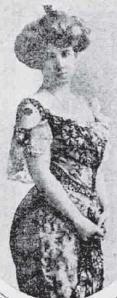







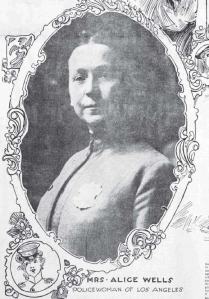
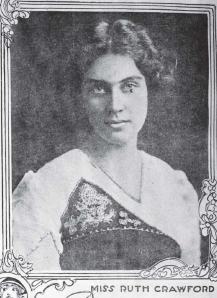
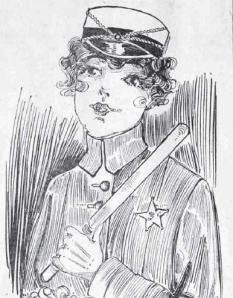
![[British suffragist Mrs. Emmeline Pankhurst (center) standing with policewomen Anna E. Neukon, Clara Loucks, LuLu C. Parks and Mrs. Alice Clement (left to right) inside the Hotel LaSalle].](https://crowdstory.files.wordpress.com/2012/06/british-suffragist-mrs-emmeline-pankhurst-center-standing-with-policewomen-anna-e-neukon-clara-loucks-lulu-c-parks-and-mrs-alice-clement-left-to-right-inside-the-hotel-lasalle.jpg?w=237&h=300)












